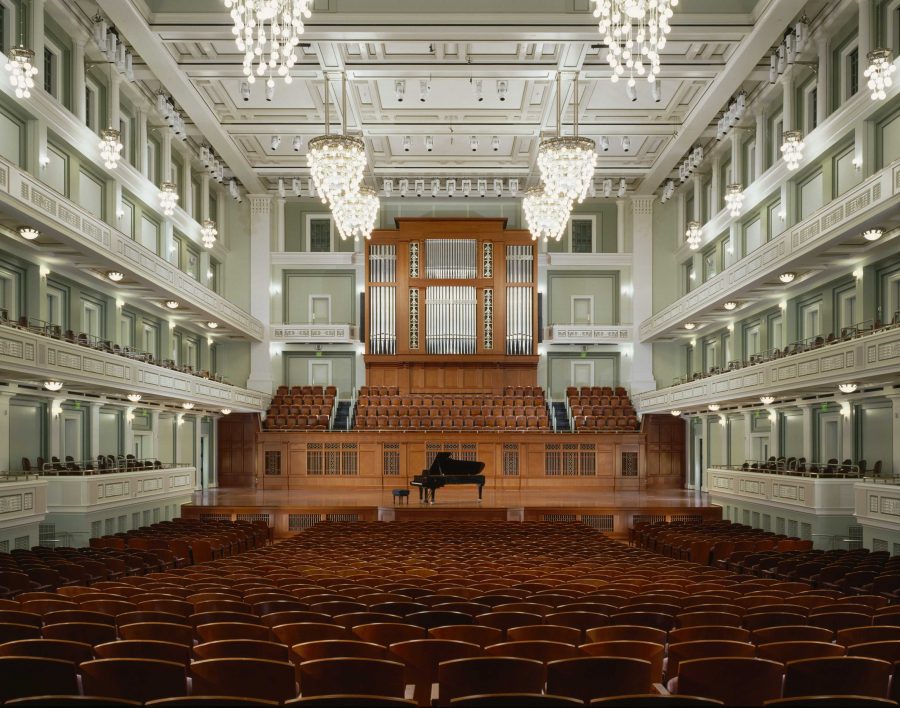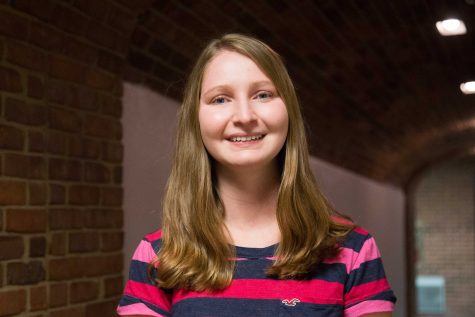While thousands of wild fans were cheering their lungs out at a Bridgestone Arena for Kanye, a quite contrasting musical experience was happening just down the street at the Schermerhorn Symphony Center. Drawing an audience of both elderly couples and young college students, the Nashville Symphony Orchestra had a full crowd for their performance of Mahler’s Symphony No. 2 in C Minor on September 24th.
A trip downtown to see classical music on a Saturday night may be foreign territory to many, but most Blair students are highly familiar with the procedure and often get student price tickets. Arriving early is expected, and the majority wear dresses or suits.
The Schermerhorn itself, in its tenth year as the NSO’s home, features grand columns and lovely granite in the lobby. Once inside the concert hall, the orchestra members sit onstage warming up, and the audience is filled with conversations. Decadent chandeliers with cascading pearl lights set the mood for a classy evening ahead.
Saturday night’s performance officially began at 8 p.m. with both the orchestra and the audience rising for “The Star-Spangled Banner.” Their first piece on the program was Jubilee: A Tennessee Quilting Party for Orchestra by Kenneth Schermerhorn himself. This piece consisted of dynamic English horn and oboe solos from the sides of the stage and then a rousing patchwork of delicately soft sections and lively fast passages.
The work the audience had been waiting for came after the twenty-minute intermission. First, the conductor Giancarlo Guerrero gave a quick introduction to the piece and its history of a years-long composing process. He explained that Mahler specified a five-minute pause between the first movement and the subsequent four because there was a six year break in the writing. With that, everyone present embarked on what Guerrero described as the “earth-shattering” journey.
For eighty minutes, the hall was filled with Mahler’s symphony fittingly referred to as “Resurrection.” In the grand finale, an entire choir, which had been waiting patiently, stood dramatically to sing the heart-touching words. Coupled with the unbelievably powerful orchestra, their message that all that dies will “rise again” and that suffering “will bear you to God” was utterly transcendent.
Describing the effect of a live performance of Mahler Two is extremely difficult, but knowing that it brought audience members to tears may help communicate the deep impact. A night with the symphony is one filled with thinking and watching, but most importantly, connecting with your fellow listeners and the musicians baring their souls through the music.




Victoria Fombelle • Oct 2, 2016 at 9:10 am CDT
Great article. Beautiful color and description — sounds like an incredible performance!